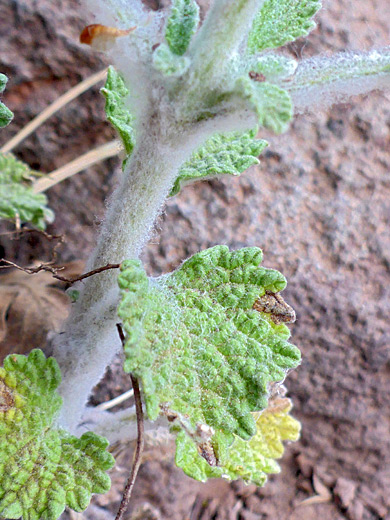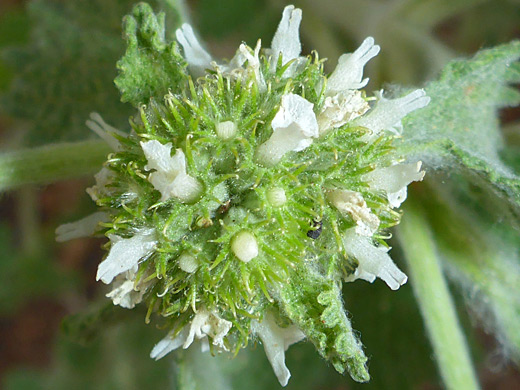Common name:
White horehound
Family:
Scientific name:
Marrubium vulgare
Main flower color:
Range:
All of the western states; an introduced species, from Europe and Asia
Height:
Up to 2 feet
Habitat:
Disturbed ground, roadsides, canyons, arable fields, foothills; usually below 2,000 feet
Leaves:
Broadly ovate to round, up to 2 inches long, hairy, with round-toothed margins
Season:
March to November
Marrubium vulgare, a Eurasian species, has become established across much of the West; it is most common in coastal areas of California, in central Arizona and in central Texas. It has a long blooming season, from spring to early winter.
The square stems have a dense hair covering, often appearing almost white. The thick, stalked, rounded leaves have a crinkly texture, shallow teeth along the margins, prominent veins, and a covering of fine hairs, more densely on the undersurfaces. The flowers are in whorls at the leaf nodes; they have a short green calyx, covered by soft hairs, divided to about half its height into five narrow lobes of equal length, and a longer, all-white corolla. Calyx lobes are distinctly hooked at the tip.
The square stems have a dense hair covering, often appearing almost white. The thick, stalked, rounded leaves have a crinkly texture, shallow teeth along the margins, prominent veins, and a covering of fine hairs, more densely on the undersurfaces. The flowers are in whorls at the leaf nodes; they have a short green calyx, covered by soft hairs, divided to about half its height into five narrow lobes of equal length, and a longer, all-white corolla. Calyx lobes are distinctly hooked at the tip.
All Contents © Copyright The American Southwest | Comments and Questions | Contribute | Site Map




